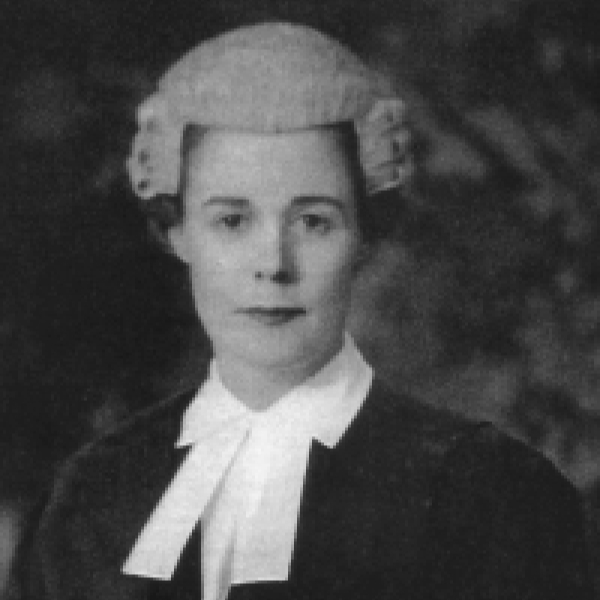
Joan Rosanove
Joan Mavis Rosanove (nee Lazarus) was Victoria's first woman barrister and later first woman QC. Born to a legal family (father Mark Lazarus was a flamboyant, well-regarded solicitor in Melbourne during the late 1800's - early 1900's), Joan studied at the University of Melbourne while doing articles with her father. She was admitted to practise in 1919 and signed the Victorian Bar Roll in 1923. A striking, confident woman, she was a familiar sight around the courts, but soon encountered discrimination when barrister Philip Jacobs offered her his chambers while he went overseas.
Resigning from the Bar in 1926, Joan quickly built up a thriving practice as an "amalgam" specialising in matrimonial law and became known as one of Melbourne's best divorce practitioners and ablest advocates. She returned to the Bar in 1949, and was made QC in 1965. Her daughter Margaret "Peg" Lusink was later to become Victoria's first woman Family Court judge.

Norma O’Connor
Norma O'Connor was the first woman to win the prestigious Supreme Court prize for law students in 1949. In 1951, she was the fourth woman to sign the Victorian Bar Roll, reading with Trevor Rapke.
In her words, "from an early age I was interested in social justice, which included a very strong interest in the advancement of women and girls. I decided when I was at school that I would become a barrister... I did not practise as a solicitor but went to the Bar". She was briefed by Maurice Ashakanasy KC (among others) and "felt quite included and accepted by barristers and judges" during her time in active practice.

Gladys Hain
In 1954, Gladys Hain was the fifth woman to sign the Victorian Bar Roll. Gladys had previously been a solicitor with Sir James McCay (his daughter Beatrix was the second woman at the Victorian Bar), as well as a journalist with the Argus newspaper, and a president of the Housewives’ Association of Victoria. During the 1920s, Gladys campaigned for standardisation of divorce laws and was a legal advisor to women's groups on subjects such as prostitution, and the adoption of children.
Gladys was known for her forthright opinions, and capacity to "get tough if they asked for it". While she was federal president of the Federated Housewives' Association, she campaigned for better conditions for housewives, lobbying producer and government groups for better prices and quality of essential food items such as bread.

Allayne Kiddle
Marcelle Allayne Kiddle completed two years of medicine at the University of Melbourne before her career was interrupted by marriage.
After a stint as a dancer, including a contract with the BBC, she enrolled at the London School of Economics (LSE) and graduated LLB (Hons) in 1956. Allayne or "Kiddle" (as she preferred to be known) read for the English Bar and was admitted to the Middle Temple in London, before returning to Melbourne. After signing the Bar Roll in 1959 (the sixth woman to do so), she read with Bill Kaye. She had hoped for a broad practice, but specialised in divorce.
During the 1960s, she returned to LSE to complete a Master of Laws. She appeared with Philip Opas QC (see below) at London's Privy Council during the Ronald Ryan trial in the late 1960s.

Mary “Molly” Kingston
Mary Kingston, known as "Molly", arrived at the Victorian Bar in 1962, having first practised successfully in Western Australia - where, together with Sheila McLemans, she previously set up WA's first all-women law firm in the 1930s. Molly specialised in family law and was highly regarded by colleagues and judges alike.
Click here for some personal reminscences by Warwick Teasdale, principal of Kenna Teasdale, about Molly Kingston. Warwick also refers to a newspaper article showing Molly in 1974.

Lynette Shiftan
Lynnette Schiftan (nee Opas) is Victoria's second woman QC (taking silk in 1984) and the state's first woman County Court judge.
She is seen here with her father Philip Opas QC, signing the Bar Roll in 1968.